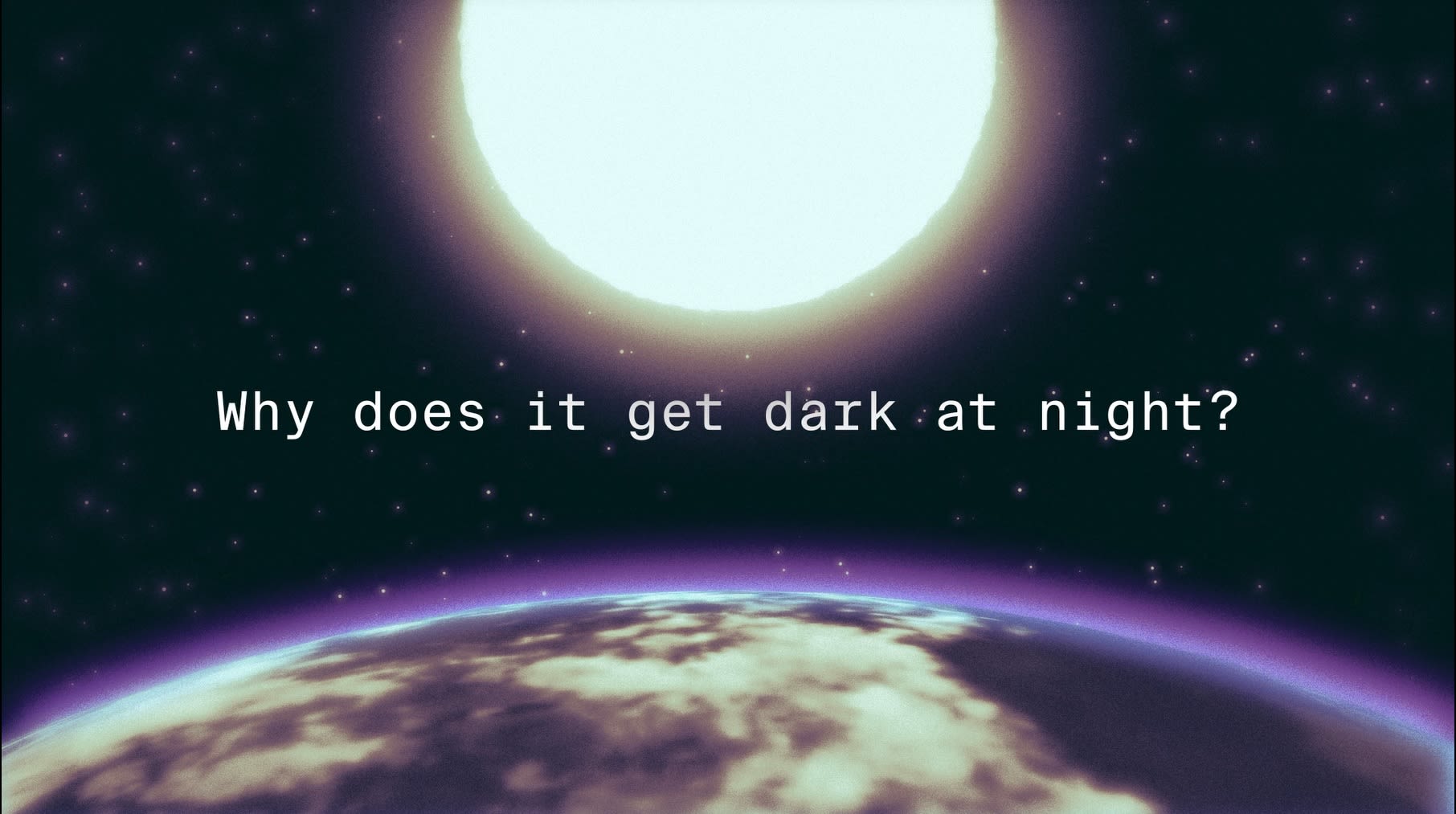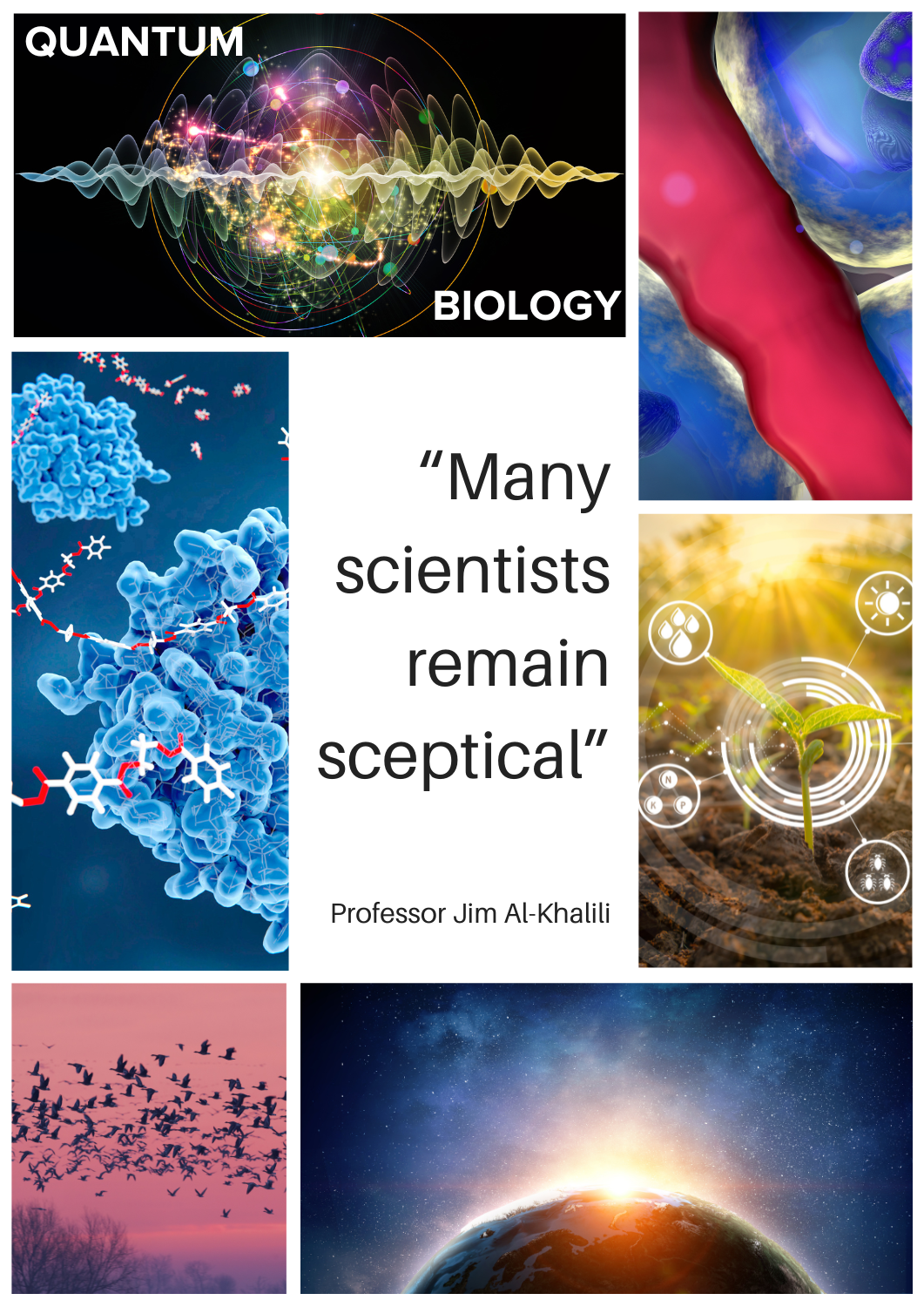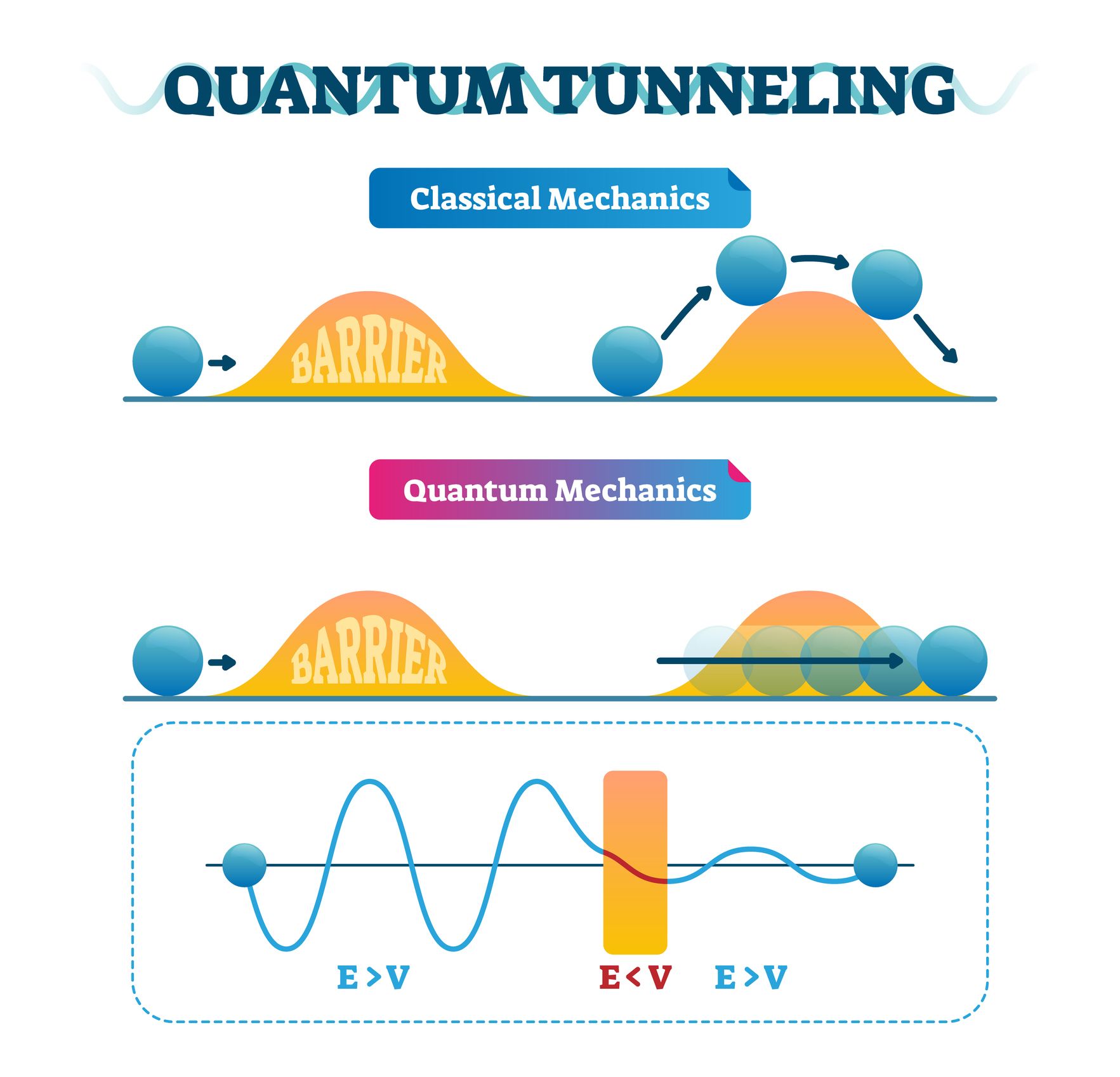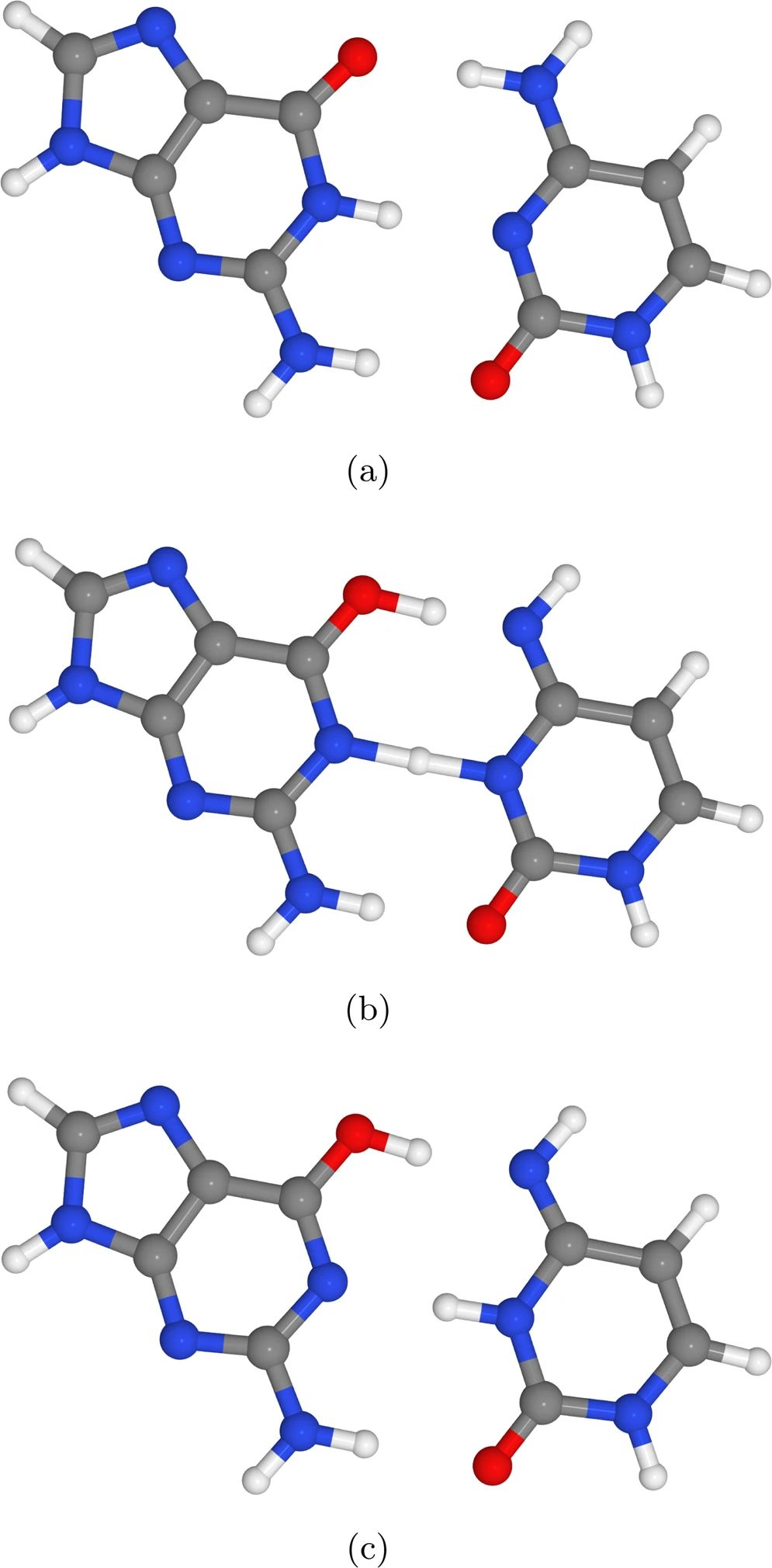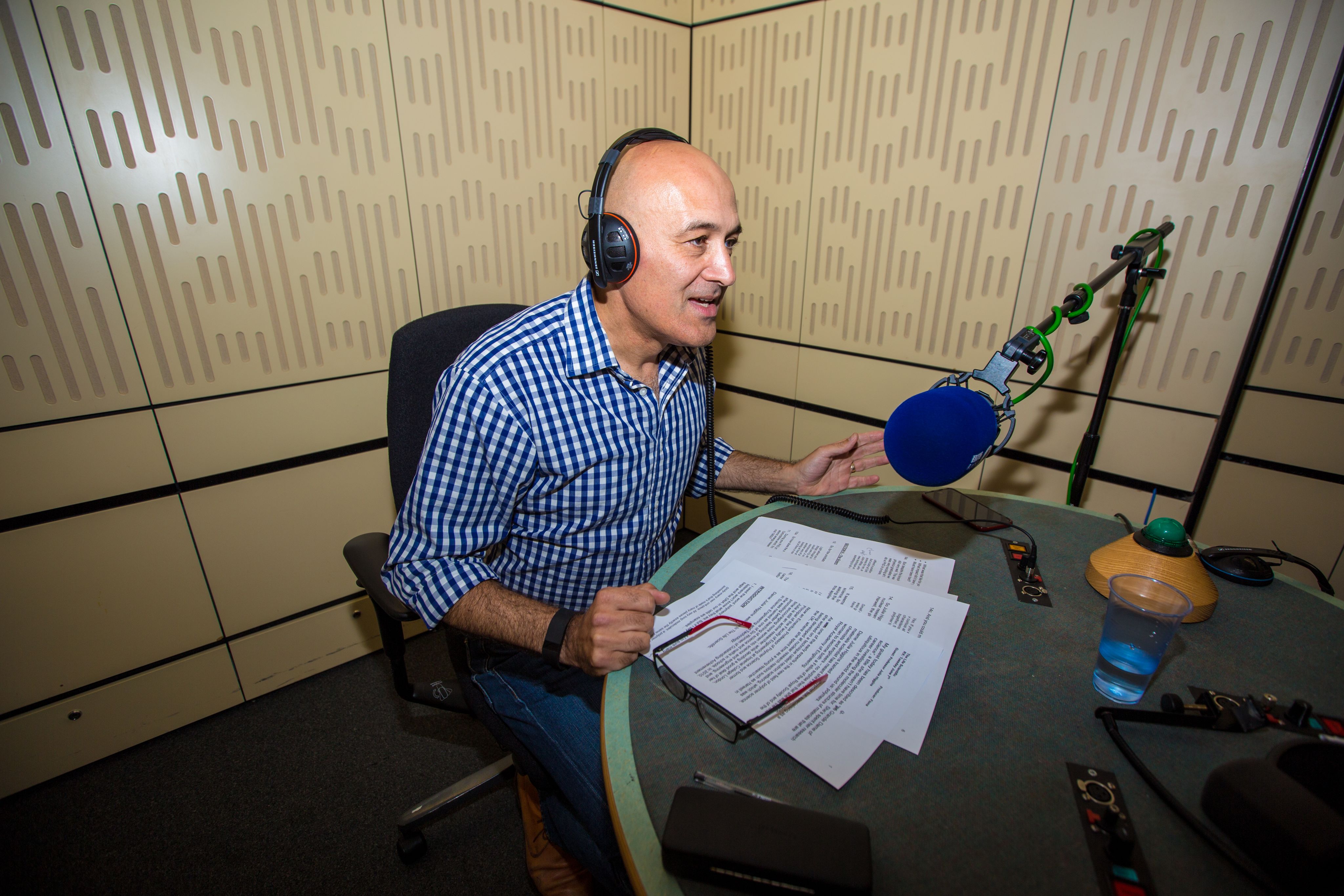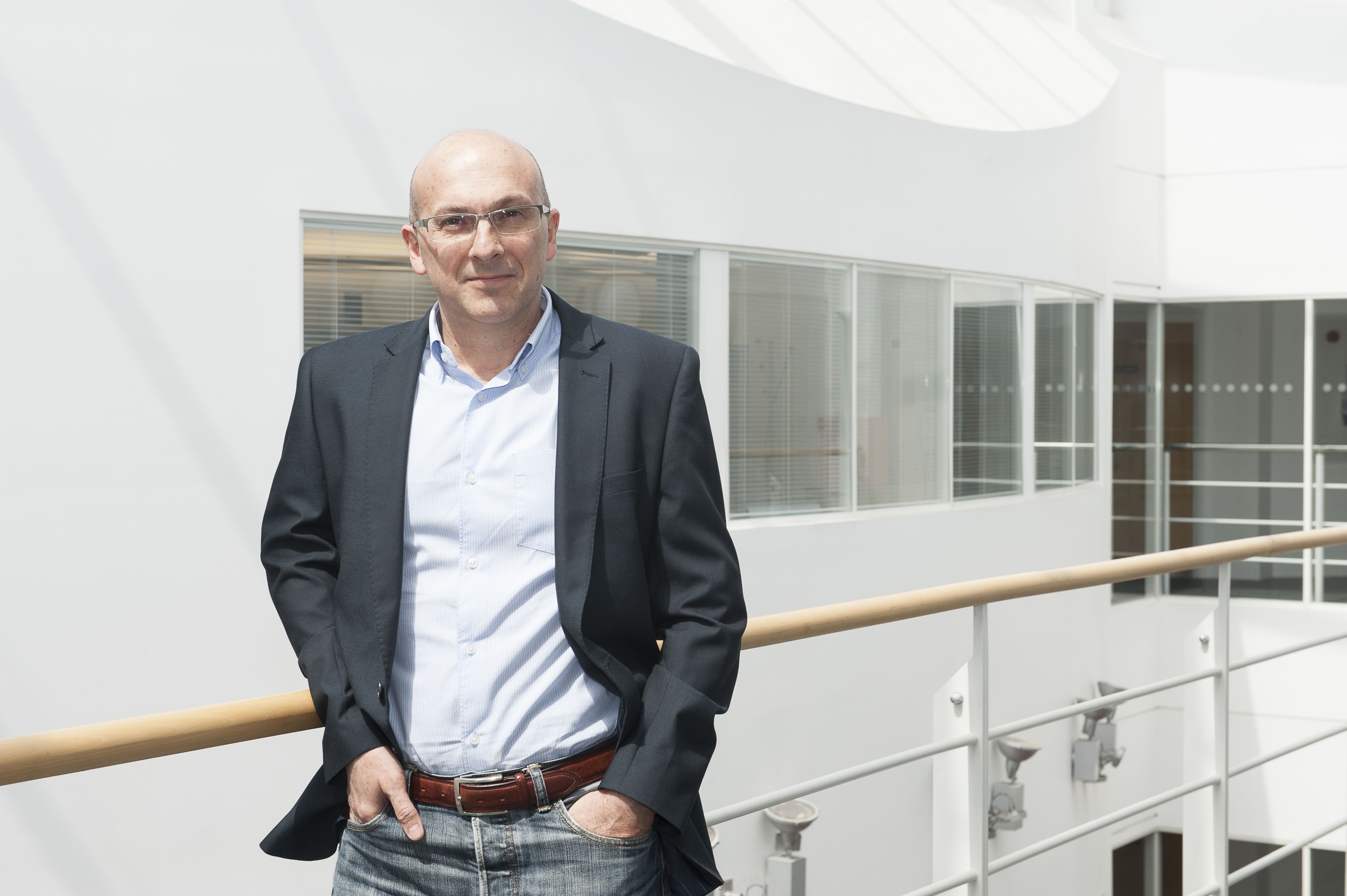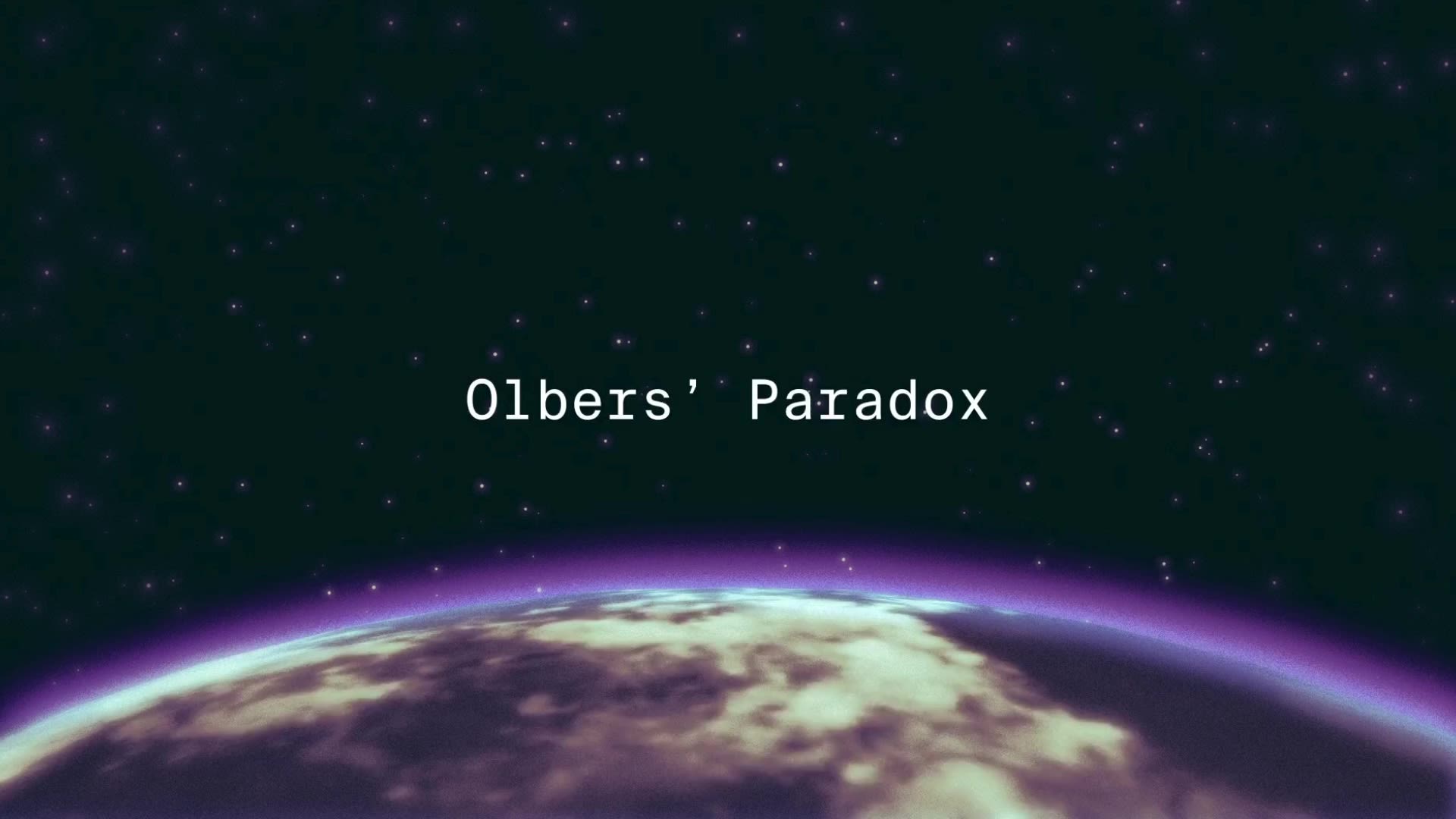
At the University of Surrey, we’re pushing the very boundaries of what is known about space and time. But we’re also always excited to find new ways to inspire the next generation of brilliant minds to push those boundaries further.
Here you can watch and learn about our new educational video series, designed to engage science-minded school students – or anyone of any age who wants to know more about what makes time and space tick. The videos are suitable in schools from Key Stage 4, and we hope they’ll be helpful for teaching across sciences, mathematics, engineering, philosophy and technology – as well as for science hobbyists and enthusiasts.
You can also read on to learn more about the cutting-edge research project and funding that has made these videos possible.
Educational Science Videos
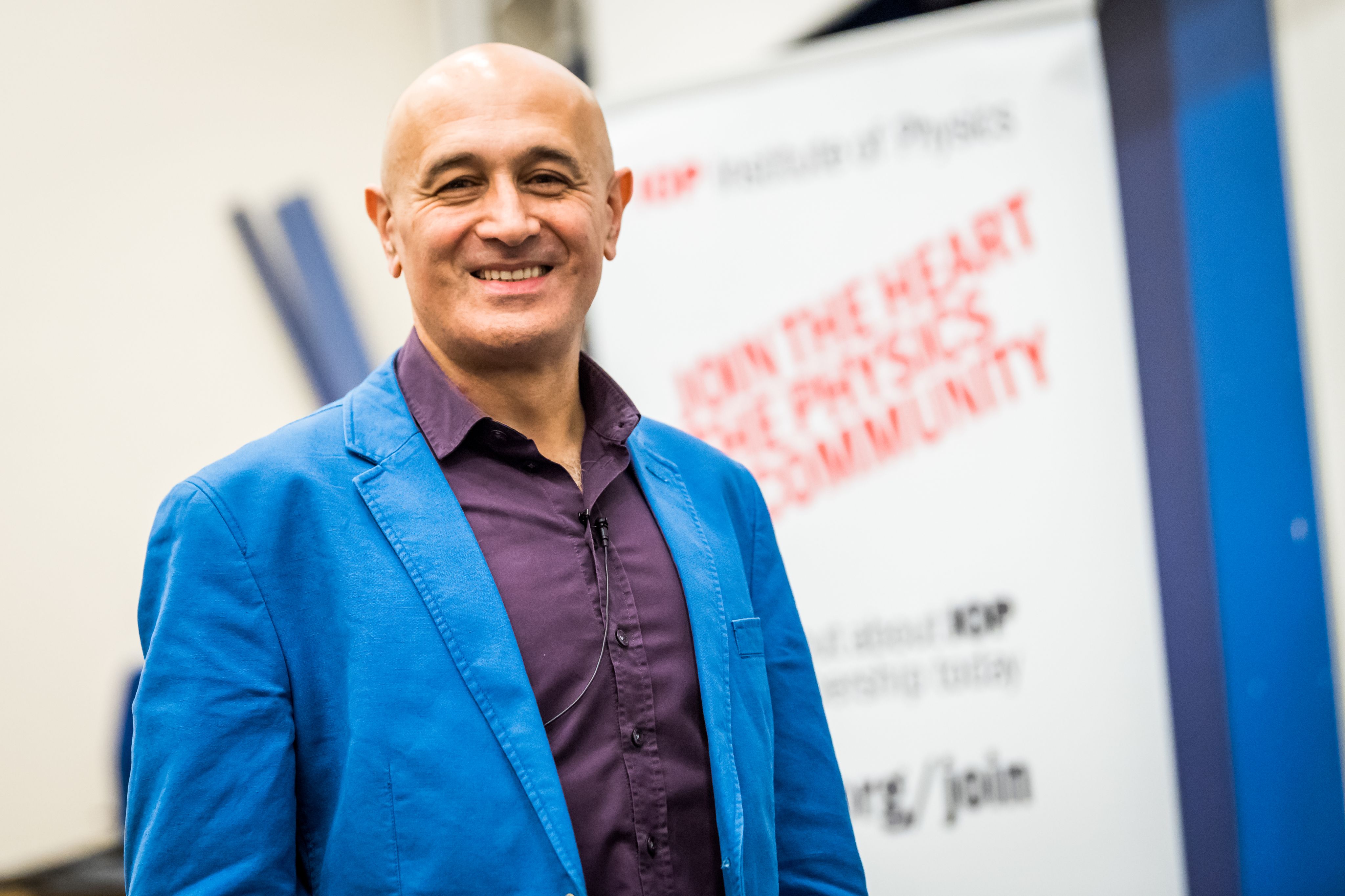
The University of Surrey has created an animated video series written, and narrated by quantum physicist, best-selling author and broadcaster, Jim Al-Khalili.
The video series explores different topics and provides educators with an effective tool for explaining some of the more abstract concepts in science.
The films will take you and your students on a journey of understanding, using visual storytelling.
So far, we have created two videos in our series, 'Olbers' Paradox' and 'Inside the Quantum World'.

Olbers' Paradox
An educational science video from the University of Surrey
Olbers' Paradox
"In a sense, this is the most beautiful piece of observational evidence for the Big Bang".
Jim Al-Khalili
Olbers’ Paradox is a response to the question ‘Why does it get dark at night?’.
You might think that this is a rather trivial question. After all, even a child knows that night falls when the sun sets below the horizon, and that since there is nothing else in the night sky anywhere near as bright as the sun, we have to make do with the feeble reflected light from the moon and the even more feeble light from the distant planets and stars.
It turns out this question is far more profound than it first appears. Indeed, for several centuries, astronomers have posed this question, and it took them a long time to find the correct answer.
Even if the universe is not infinite in size (and it may well be), it is so huge that it effectively goes on forever.
Therefore, in every direction we look in space, we should see a star, and the sky should be even brighter at night than it normally is during the day.
In fact, it should be so bright that it does not matter whether it is day or night.
The real puzzle is that it took astronomers so long to figure this out.
The above is a summarised extract from Jim Al-Khalili's book 'Paradox: The Nine Greatest Enigma's in Physics'.
You catch watch 'Olbers' Paradox' below...


Inside the Quantum World
An educational science video from the University of Surrey

Inside the Quantum World
Quantum mechanics is a fundamental theory in physics that describes the behaviour of matter and energy at the smallest scales, typically at the level of atoms and subatomic particles. Unlike classical mechanics, which governs the motion of larger objects, quantum mechanics introduces the concept of wave-particle duality, suggesting that particles, such as electrons and photons, can exhibit both wave-like and particle-like properties.
Although initially seen as strange and puzzling, quantum mechanics is now universally accepted as giving us the best description of the microscopic world. And embracing its weirdness has led us to a much better understanding of the structure of matter and the building blocks of the Universe.
Without this understanding we would never have developed the silicon chip, lasers, computers, or the smart phone. Recent advances in quantum technologies, like quantum computers, now have the potential to transform our lives to an even greater extent.
So how did it come about and who were the geniuses who unlocked nature’s deepest secrets of the microworld?
You can watch 'Inside the Quantum World' below...

The emergence of Quantum Biology
An educational science video from the University of Surrey
The emergence of Quantum Biology
The term 'quantum' comes from the Latin word 'quantus', meaning 'how much'. In today's world, we use it to describe the smallest amount of physical property, e.g. energy, that can be involved in an interaction.
You might already be familiar with the concept of quantum mechanics, and how this area of science describes how particles behave and interact at the atomic and subatomic levels. For many years now, the mathematical models of the characteristics of atoms developed by scientists from all over the world has helped us understand the universe better.
However, we are slowly discovering that certain processes within living cells show signs of quantum mechanics. And this new field of science is called quantum biology.
Quantum biology is a fascinating interdisciplinary field that explores the intersection of quantum mechanics and biology. Although considered a relatively new field of science, its history can be traced back to the 1920's, when Danish physicist Niels Bohr first considered the application of atomic theory to biological problems.
The field remained largely theoretical until recent years, when advancements in experimental technologies have allowed scientists to observe the quantum effects in biological systems directly.
To give you an example, certain animals, like the European Robin, navigate using Earth's magnetic field. Quantum entanglement is involved in the radical-pair mechanism, which guides these animals. This fascinating biological process creates a compass inside their eyes and helps them respond to magnetic forces.
Quantum biology bridges the gap between fundamental physics and biological phenomena, Whilst still theoretical, it holds immense potential to unlock a whole new understanding of life processes.
As we continue to explore this field, we may uncover even more mysteries waiting to be unravelled.
You can watch 'The emergence of Quantum Biology' below...
The Scientific Method
An educational science video from the University of Surrey
The Scientific Method
The world today is complex, unpredictable and full of contradictions, and most of us get through life by making decisions that are all to often consciously or unconsciously arrived at based on the opinions and beliefs of those around us or by our exposure to an ever-growing amount of information. But how can we trust who we listen to or what we read or watch online? It is often difficult to think and behave objectively, because we all have built in biases that colour or views and decision making.
Luckily, humankind has developed a way of seeing the world rationally, objectively and with an open mind. It is called the scientific method.
In this short animation, Jim Al-Khalili explains some of the core principles that underpin the scientific method, which can help us all navigate modern life more confidently, such as the nature of truth and uncertainty, the role of doubt, the pros and cons of over-simplification, the value of guarding against bias and the importance of evidence-based thinking. Crucially, many of these ideas need not only be applied to science in helping us understand how the world works, but can also be deeply relevant to the way we think and behave more generally in our daily lives.
You can watch 'The Scientific Method' below...
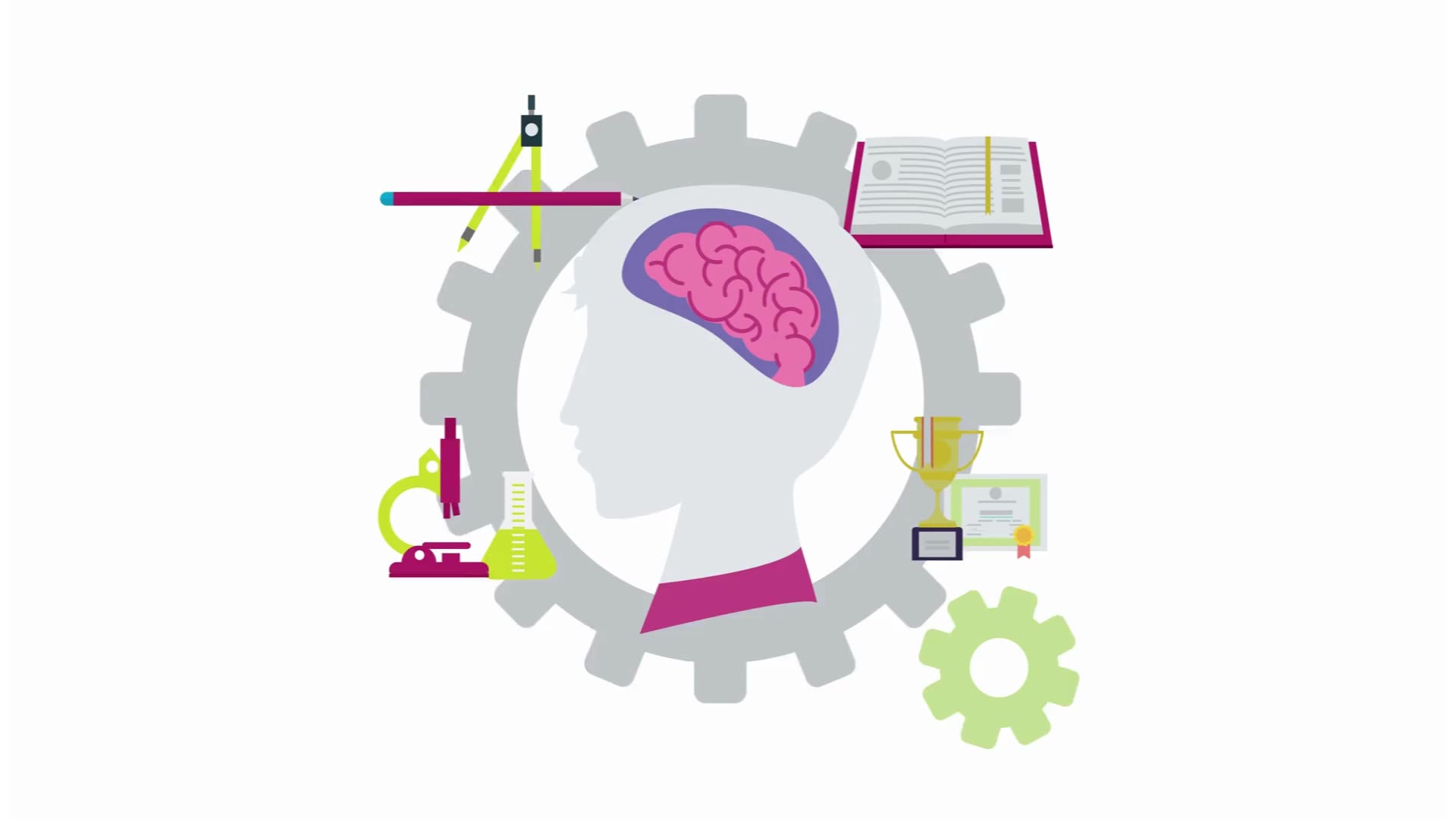
Thank you for watching.
Continue reading to learn more about why the University of Surrey has made these educational videos.
Lesson Plan: Inside the Quantum World
Objective:
Students will understand the basic principles of quantum mechanics and its applications in modern technology.
Materials:
- Video: “Inside the Quantum World”
- Whiteboard and markers
- Handouts with key concepts and definitions
- Internet access for additional research
Introduction (10 minutes):
- Hook: Start with a brief discussion on how technology has evolved over the past century. Ask students to name some modern devices they use daily (e.g., smartphones, computers).
- Objective: Explain that today’s lesson will explore the science behind these technologies—quantum mechanics.
Video Viewing (15 minutes):
- Watch the Video: Play the “Inside the Quantum World” video.
- Note-taking: Pause occasionally, and encourage students to take notes on key points and any questions they have during the video.
Discussion (15 minutes):
- Q&A Session: Address any questions students noted during the video.
- Key Concepts: Discuss the main points from the video: What is quantum mechanics? How does it differ from classical physics? Examples of quantum mechanics in technology (e.g., transistors, lasers).
Activity (20 minutes):
- Group Work: Divide students into small groups. Assign each group a specific application of quantum mechanics (e.g., computers, quantum computing, MRI machines).
- Research and Presentation: Each group researches their topic and prepares a short presentation to share with the class.
Conclusion (10 minutes):
- Presentations: Groups present their findings.
- Summary: Summarize the key takeaways from the lesson.
- Homework: Assign a short essay on how quantum mechanics might influence future technology.
Assessment:
- Participation in discussions and group activities.
- Quality of group presentations.
- Homework essay.
Feel free to adjust the timings and activities based on your class’s needs!
Life on the Edge
Quantum Thermodynamics, Quantum Biology and the Arrow of Time
Our educational videos are one of the outcomes from our interdisciplinary research project, exploring how the ‘arrow of time’ manifests at the quantum scale – which has exciting implications for the understanding of time and life itself. The project is funded from a philanthropic grant by the John Templeton Foundation.
Here is a short video introducing the project:
Themes
Our research is guided by three of the ‘big questions’ which informed Sir John Templeton’s vision and continue to baffle scientists today: What is the nature of reality? What is the nature of time? And what is the nature of life?
Our research themes are split into the following areas:
- Quantum thermodynamics and the emergence of irreversibility
- Open quantum systems in quantum biology
- Quantum ontology and the arrow of time
- Bridging the quantum-classical divide
- Experimental quantum biology in a living cell
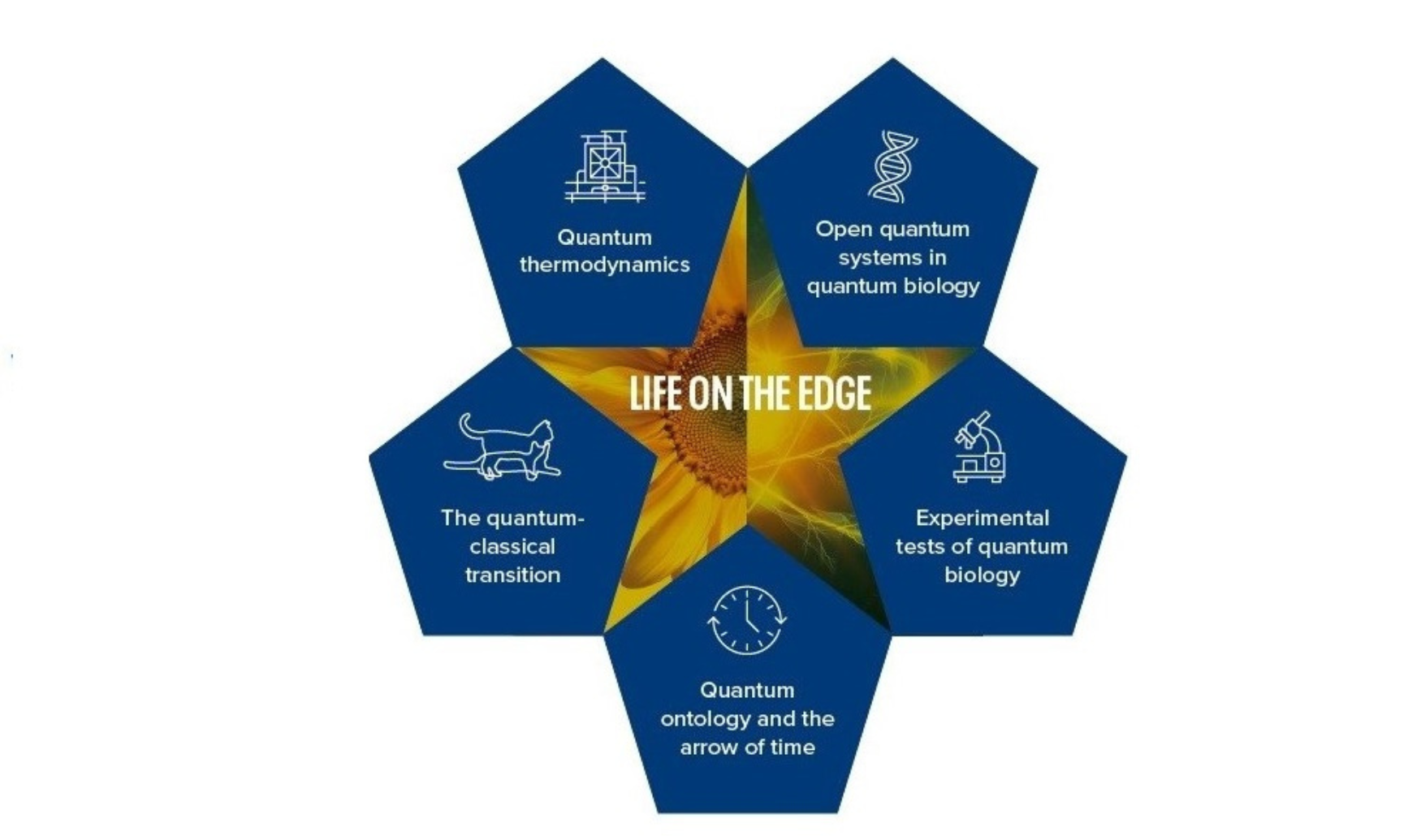
The story so far
This interdisciplinary research project brings together theoretical physics, applied mathematics, computational chemistry, experimental molecular biology, and philosophy. In many cases, there is very strong overlap between its various thematic areas. Already, the research has seen many papers published in leading journals and results have been presented at international conferences and specialist workshops.
We highlight a couple of projects where interesting advances are being made.
The origin of the direction of time
The problem of how a direction to time from past to future emerges from time-symmetric laws of physics has been around for so long that many physicists and philosophers either assume it has been solved or that it is too intractable and therefore uninteresting.
In recent years, the issue has come back into fashion, motivated by interest in fields such as quantum information theory, non-equilibrium statistical mechanics and quantum thermodynamics, as well as ongoing puzzles such as the black hole information paradox and the search for a theory of quantum gravity.
In our research, we are exploring the possibility that the arrow of time is in the direction of increasing quantum entanglement (when systems at the quantum level become linked up and exchange information) and that this is "in a sense" the most fundamental origin for time’s arrow.
The work involves a combination of quantum physics and philosophy. It is being led by theoretical physicist Jim Al-Khalili (Surrey) with philosophers of physics, Eddy Chen (San Diego), Simon Saunders (Oxford) and Karim Thébault (Bristol).
Does life know about quantum mechanics?
This is a project in quantum biology involving sophisticated computer simulations of the behaviour of the chemical bonds holding the strands of DNA together. The work is being led by computational chemist Marco Sacchi (Surrey), together with Jim Al-Khalili and Templeton funded postdoctoral research fellow, Louie Slocombe, and PhD student, Max Winoken.
The team has recently published a flurry of papers in both physics and chemistry journals. Broadly, they have found that while quantum tunnelling of hydrogen atoms from one DNA strand to the other can take place very readily in DNA, which can lead to damaging mutations, life seems to have evolved the ability, through the action of an enzyme called the helicase, to correct for this by pushing the hydrogen atom back to its correct place as it unzips the two strands in the first stage of DNA replication.
This seems to be a new feature of the role of quantum mechanics in living cells: rather than life making use of the tricks of the quantum world it also has to be careful to stop quantum effects from having too damaging an effect.
Published Papers
An open quantum systems approach to proton tunnelling in DNA | Communications Physics (nature.com)
The Origins of Quantum Biology, Proceedings of the Royal Society A
Fig. 1: Schematic depiction of the Guanine–Cytosine proton transfer reaction. a Rendering of the canonical standard form taken from the reaction path of Slocombe et al.4 with permission from the Royal Society of Chemistry. b The energetic maximum along the reaction coordinate. c The potentially mutagenic tautomeric (enol-imino) non-standard form of the DNA base. Hydrogen atoms are shown in white, nitrogen in blue, carbon in grey, and oxygen in red.
Fig. 1: Schematic depiction of the Guanine–Cytosine proton transfer reaction. a Rendering of the canonical standard form taken from the reaction path of Slocombe et al.4 with permission from the Royal Society of Chemistry. b The energetic maximum along the reaction coordinate. c The potentially mutagenic tautomeric (enol-imino) non-standard form of the DNA base. Hydrogen atoms are shown in white, nitrogen in blue, carbon in grey, and oxygen in red.

About
‘Life on the Edge’ is funded by a $3 million grant from the John Templeton Foundation. The project involves a research team drawn from across six universities, University of Surrey, University of Oxford, and the University of Bristol, in the UK and Arizona State University, University California Los Angeles, and, UC San Diego in the US.
The project is hosted by the Quantum Foundations Centre, here at Surrey.
The team is an interdisciplinary group of researchers with expertise in quantum physics, applied mathematics, computational chemistry, experimental molecular biology and philosophy.
The Origins of Quantum Biology
Quantum Biology is usually seen to be a new discipline. However, it's roots go much deeper to the quantum pioneers of the early twentieth century.
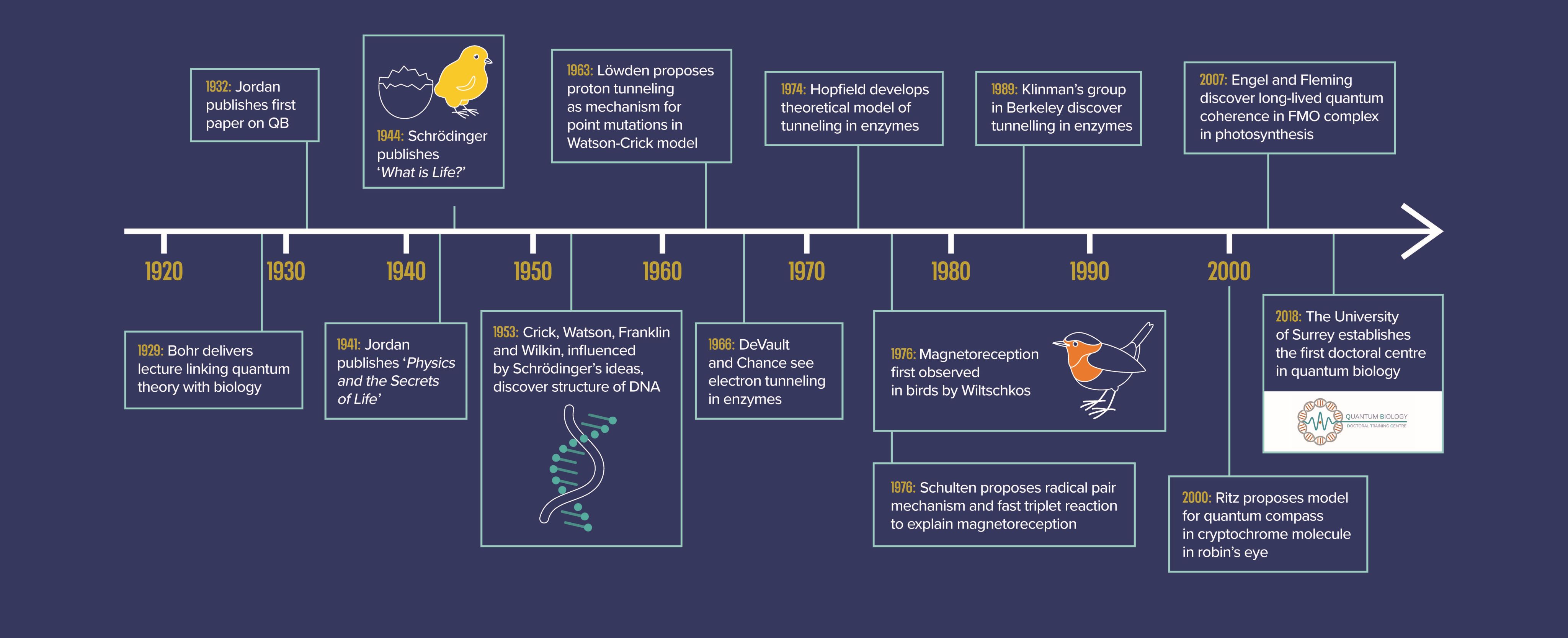
It was, in fact, born shortly after the development of quantum mechanics itself.
In 1953 the double helix structure of DNA was discovered. This was a major breakthrough in the field of genetics and helped scientists understand how genetic information is passed down from generation to generation.
Quantum tunnelling or barrier penetration as its also known, is more of a recent phenomenon, whereby objects such as electrons or atoms can pass through energy barriers. Today, scientists use this theory to explain if time travel is possible!
The University of Surrey has set up the world's first centre dedicated to training interdisciplinary scientists in the field of quantum biology.

Principal Investigators
Professor Jim Al-Khalili
Jim Al-Khalili CBE FRS is a distinguished professor of physics at the University of Surrey and one of Britain’s best-known science communicators. He received his PhD in nuclear physics in 1989 and continues to publish widely in quantum physics. Jim is a prominent author, having written fifteen books on popular science and the history of science, between them translated into twenty-six languages.
He is a regular presenter of science documentaries on TV and hosts the long-running weekly BBC Radio 4 programme, The Life Scientific. He is a past president of the British Science Association and a recipient of many awards, such as the Royal Society Michael Faraday Prize, Wilkins-Bernal-Medawar Medal, the Institute of Physics Kelvin Medal and the Stephen Hawking Medal for Science Communication.
Dr Andrea Rocco
Andrea Rocco graduated in Physics at the University of Pisa (Italy) in 1994. In 1998 he obtained his PhD in Physics from the University of North Texas (USA). Between 1998 and 2007 Andrea held postdoctoral positions across Europe and his research spanned several areas, from the general fields of statistical mechanics and pattern formation to the modelling of biological systems. In 2007 he obtained a Lectureship in Applied Mathematics at the University of Bath (UK), where he taught mathematical biology modules at both MSc and undergraduate levels.
In 2009 Andrea joined the University of Surrey (UK), where he is now Associate Professor in Physics and Mathematical Biology, with a shared appointment between the Department of Microbial Sciences and the Department of Physics.
Contact us
If you have any feedback, or would like to contact us directly about any of the videos or information on this page, please email us at quantumarrowoftime@surrey.ac.uk


